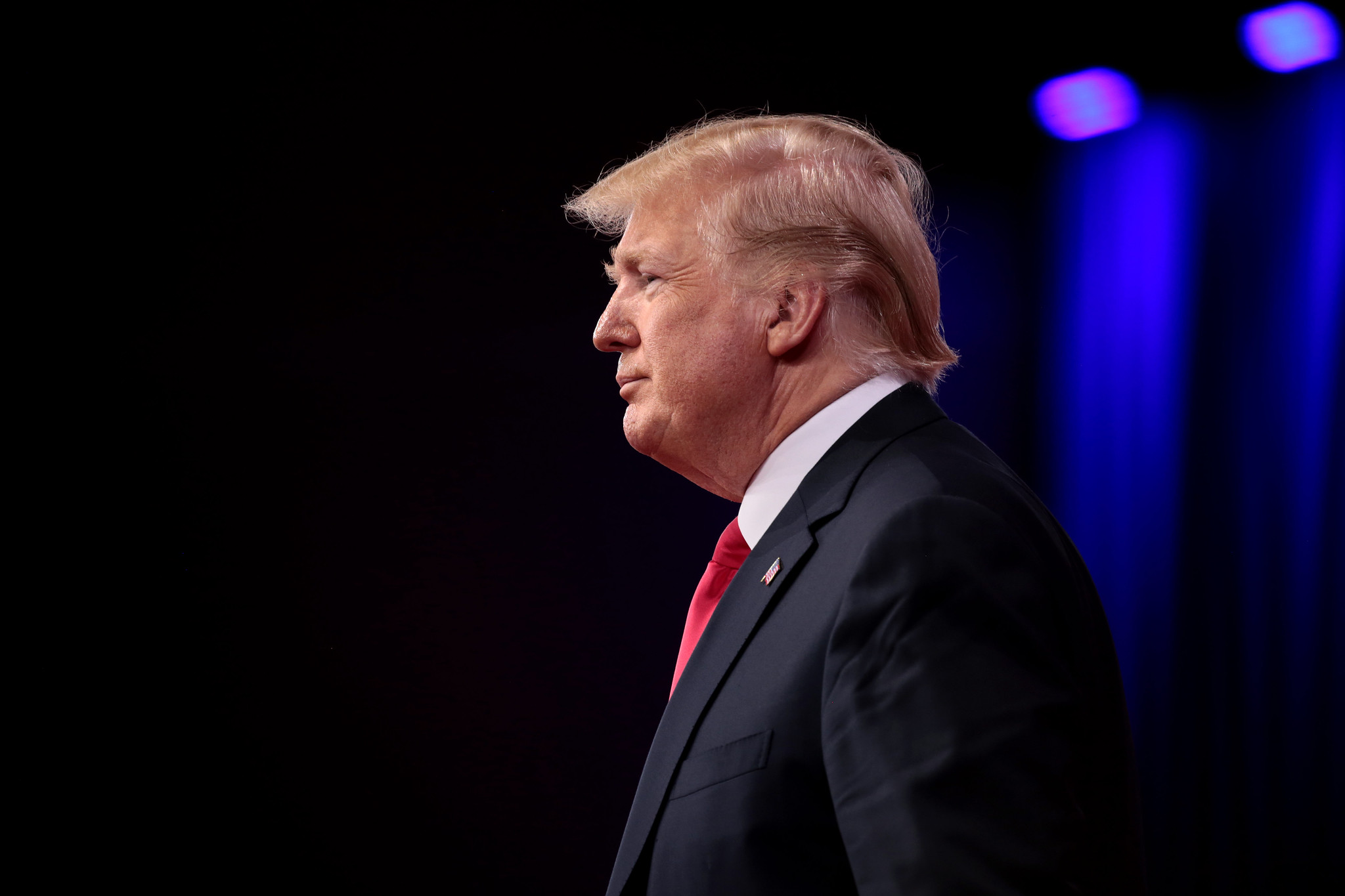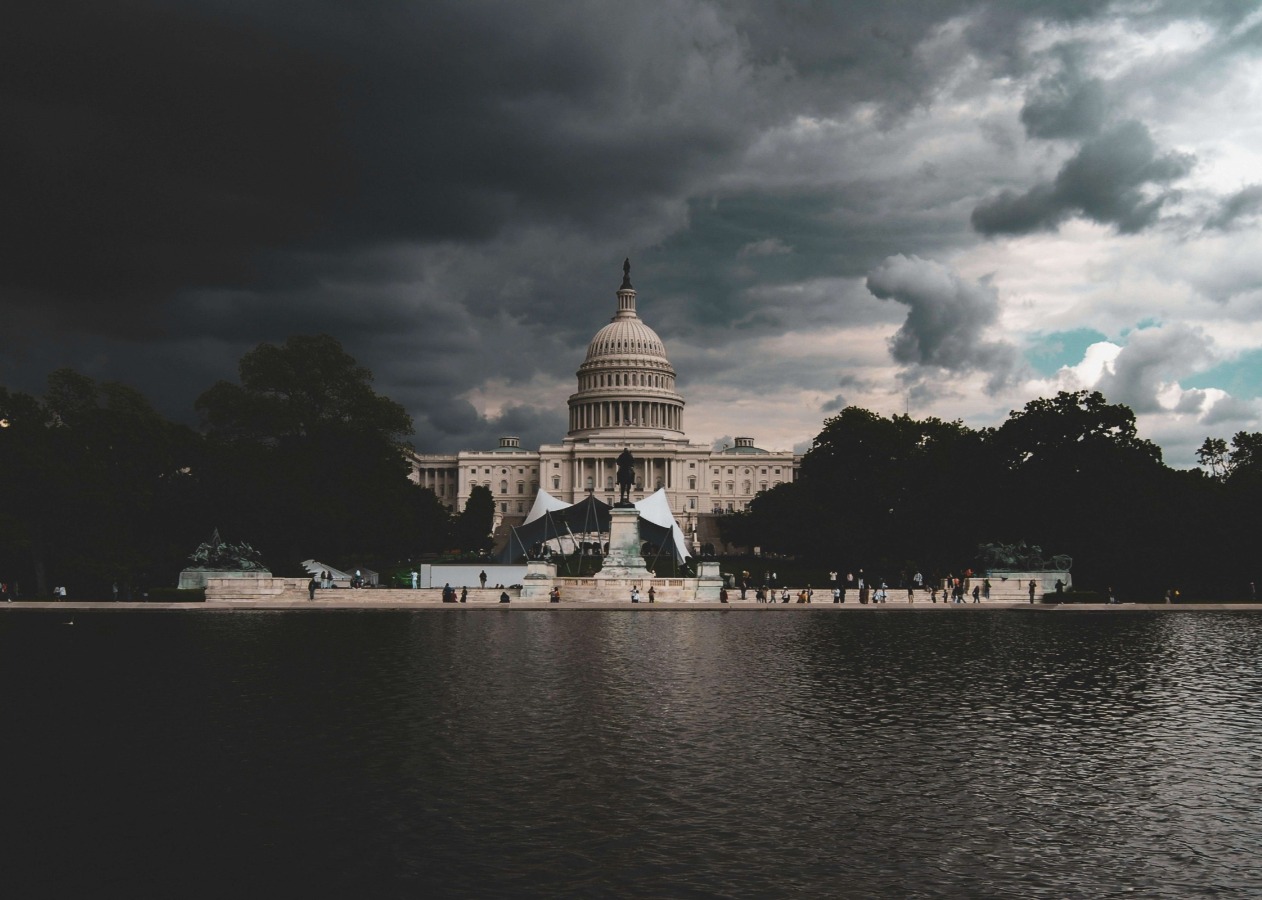Trump’s Attacks on Justice Department Independence, Then and Now

Published by The Lawfare Institute
in Cooperation With

Ernest Hemingway famously described the process of bankruptcy as occurring “gradually, and then suddenly.” The same could be said of Donald Trump’s assault on the integrity of the Justice Department. During Trump’s first term, the president chipped away at the independence of federal law enforcement bit by bit over the course of four years. In the first few months of Trump’s second term, the new administration smashed through many of the remaining barriers—stocking FBI and Justice Department leadership with loyalists, while firing apolitical civil servants; abandoning the prosecution of New York City Mayor Eric Adams in a crude attempt at a quid pro quo; and threatening politicized investigations into Trump’s perceived enemies.
This spread of activity within the Justice Department is, perhaps intentionally, dizzying. With some exceptions, news stories that might have spiraled into multi-month scandals even during the first Trump administration have vanished quickly in the cacophony of news. The new administration’s abuses of justice are in many cases close variations on tactics sampled by Trump the first time around. But now, they’re happening all at once. And the administration is barely bothering to hide its actions or justify them as anything other than an effort to turn the Justice Department into Trump’s personal gang of enforcers.
Trump spent much of his first term raging against the limitations of his control over the department. He disliked both that he could not stop Special Counsel Robert Mueller from investigating him—at least, not without political blowback—and that his aides had discouraged him from demanding that the Justice Department prosecute his enemies. “The saddest thing is, because I am the President of the United States, I am not supposed to be involved with the Justice Department,” he complained during a radio interview in 2017. “I’m not supposed to be involved with the FBI.”
The result was a strange dance, where Trump would attempt to make demands on the Justice Department only to be redirected or iced out by the department itself or the White House Counsel’s Office. Over the course of the first administration, Trump would return to these demands and would sometimes succeed in pushing the department to align its prosecutorial priorities with his own, particularly once William Barr replaced Jeff Sessions as attorney general.
It was a gradual process of corrosion. This time, though, Trump isn’t bothering with “gradual.”
Consider the saga of the FBI directorship. Arguably, Trump’s first serious effort to meddle with independent law enforcement came just weeks into his first term as president, when he asked then-FBI Director James Comey to abandon the bureau’s investigation into Trump’s erstwhile national security adviser Michael Flynn. That story broke following Trump’s firing of Comey in May 2017, which set in motion a chain of events that ultimately led to the appointment of Mueller as special counsel. The ensuing investigation would go on to define the first two years of Trump’s presidency.
By the standards of Trump’s second term, the degree of public outrage over such scandals seems laughable—as does Trump’s anxiety over potential blowback from Justice Department firings. In 2025, Trump didn’t even have to bother with firing the FBI director in order to get rid of somebody inconveniently independent; Director Christopher Wray, himself appointed by Trump in 2017 after Comey’s dismissal, saw the writing on the wall and decided to resign in advance. Then, Republican senators confirmed Trump’s replacement pick, Kash Patel, despite Patel’s long and concerning track record of affiliating himself with pro-Trump conspiracy theories and enthusiasm for retaliatory investigations of Trump’s enemies. Essentially, Senate Republicans looked at a chain of events very similar to that which eight years ago precipitated a major scandal and elicited discomfort even from the Republican caucus—but this time, they nodded and gave their stamp of approval.
Trump’s effort to get Comey to back off the Flynn case was an early example of what Benjamin Wittes and Susan Hennessey have called “defensive” abuses of the Justice Department—that is, using the department as a shield to protect the president and his friends from the normal law enforcement process. Of course, Trump’s effort to derail the investigation of Flynn did not succeed, and the president likewise could never quite bring himself to shield himself and his associates by firing Mueller. Later in his first term, however, he would have help in the form of Attorney General Barr, who in 2020 worked to undercut Mueller’s prosecutions of both Flynn and Roger Stone—pushing the Justice Department to dismiss the case against Flynn outright and to recommend a lighter sentence for Stone. Those efforts by Barr led to the withdrawal of career prosecutors from the cases—including one attorney who resigned from the Justice Department in protest—and, concerning Flynn, a prolonged court fight that ended only when Trump decided to simply grant his former national security adviser a pardon. Barr also worked behind the scenes to cut Trump’s friends a break in other cases, unsuccessfully demanding that the U.S. Attorney’s Office for the Southern District of New York soft-pedal the case against the Turkish financial institution Halkbank following White House lobbying by Turkish President Recep Tayyip Erdogan.
Again, all this took place over the span of four years. In the first month and a half of Trump’s second term, meanwhile, the Justice Department has rocketed straight to where Barr ended up near the end of Trump’s first term in office: seeking to get criminal prosecutions against the president’s allies tossed out of court. Only a week into the new administration, the department moved to dismiss charges against Trump’s two co-defendants in the Mar-a-Lago documents case and did the same in the prosecution of former Republican Rep. Jeff Fortenberry of Nebraska, a Trump ally.
But the closest parallel to the first Trump administration’s actions in this sphere is the case of New York Mayor Eric Adams—which, for those who followed the Flynn saga, is déjà vu all over again. Once more, the administration demanded that the Justice Department dismiss a meritorious case, and did so in a fashion that precipitated the resignation of career Justice Department employees: in Flynn’s case, former Mueller prosecutor Brandon Van Grack; in Adams’s, Acting U.S. Attorney for the Southern District of New York Danielle Sassoon and prosecutor Hagan Scotten, both of whom wrote dramatic letters explaining their disagreement with then-Acting Deputy Attorney General Emil Bove’s directive to drop the prosecution. Five other attorneys resigned from the department’s Public Integrity Section in protest.
And, as in the Flynn case, the Adams dismissal has resulted in a dispute over the scope of a judge’s discretion to deny the Justice Department’s motion to dismiss the case. Citing Judge Sullivan’s similar action in Flynn’s case, Judge Dale Ho appointed an amicus curiae to review whether Rule 48(a) of the Federal Rules of Criminal Procedure permits him to deny the motion. After receiving the amicus’s recommendation, which suggested that Ho must dismiss the Adams case but may opt to throw it out permanently instead of abiding by the Justice Department’s request to dismiss without prejudice, Ho is now weighing his options. (In 2020, Judge Sullivan never ruled on the issue, thanks to Flynn’s pardon.)
The similarities between the Flynn and Adams cases are not exact. Trump’s scheme to wipe out the prosecution against Flynn was both a thumb in the eye of the Mueller investigation and a means of rewarding Flynn’s loyalty to Trump over the course of that probe. It was, as were so many of Trump’s abuses of the Justice Department during his first term, deeply personal. In contrast, the Adams saga appears to be far more casual and opportunistic. Trump is seemingly seeking to dismiss the case against Adams without prejudice in order to keep the possibility of future prosecution hanging over the mayor’s head, so as to strong-arm him into cooperating with the White House’s plans to carry out aggressive immigration enforcement efforts in New York City. It’s a very run-of-the-mill example of corruption—which itself suggests that Trump may be getting more comfortable in exercising this aspect of his power. No longer is it a special tool to be used only on particularly important occasions.
The same is true of Trump’s “offensive” abuses—turning the department into a sword against the president’s enemies. Here, too, Trump has moved with alarming speed to catch up to where he was at the end of his previous administration. From 2017 through 2021, when Trump demanded investigations, he focused on people who had been involved in some relatively prominent way with Hillary Clinton’s presidential campaign or the FBI’s probe into 2016 Russian election interference. Today, though, the efforts to wield the department as a weapon have been far more widespread, potentially targeting anyone whose actions or presence happen to have been inconvenient to the administration in some way.
During Trump’s first term, he repeatedly tried to push the Justice Department into investigating Hillary Clinton and James Comey, alarming White House Counsel Don McGahn to the extent that McGahn drafted memos in spring 2018 warning the president away from this approach. Once Barr arrived at the Justice Department in 2019, he similarly sought to bully U.S. attorney’s offices into going after a range of perceived Trump enemies, including the prominent Democratic lawyer Greg Craig and—somewhat bafflingly—John Kerry. According to Geoffrey Berman, who led the U.S. Attorney’s Office for the Southern District of New York during this period, the Southern District rejected both demands, after which Barr shopped the cases to yet another U.S. attorney’s office. Kerry was never prosecuted; Craig was charged and acquitted following a jury trial, as were two other defendants pursued by the prosecutor John Durham, whom Barr appointed in 2019 to investigate the origins of the Russia investigation. In one puzzling instance, a criminal investigation of former FBI Deputy Director Andrew McCabe—a longtime Trump target—sputtered out into nothing, possibly because a grand jury refused to return an indictment.
These investigations tended to obscure Trump’s own involvement in an attempt to provide the prosecutions with a sheen of respectability, rather than trumpeting the department’s obedience to the president. Today, the picture is somewhat different. Key Justice Department officials have proudly characterized themselves as working directly on Trump’s behalf—a major breach of the department’s independence. It is likewise not a coincidence that two key figures in the current Justice Department—Deputy Attorney General Todd Blanche and Emil Bove, now principal associate deputy attorney general—served as Trump’s personal lawyers and represented him in his criminal cases until his elevation to the presidency.
But the poster child for this hyper-aggressive approach is Ed Martin, the interim U.S. attorney for the District of Columbia who has described himself as one of the “president’s lawyers.” Martin has made somewhat of a practice of sending threatening letters announcing vague “inquiries” into figures he feels have crossed Trump in some way, including Senate Minority Leader Chuck Schumer (D-N.Y.) and Rep. Robert Garcia (D-Calif.). The Washington Post’s reporting indicates that Martin also pushed to investigate supposed fraud related to the Biden administration’s distribution of grants pursuant to the Inflation Reduction Act, over which one career prosecutor resigned rather than pursue. According to a recent court filing by Citibank, the government informed the bank that it was conducting a criminal probe and requested that Citi freeze money set to be distributed under the fund; during a hearing, the Justice Department was unable to provide any evidence of a violation of criminal law that would justify the freeze.
Martin is a very different character than the more cautious lawyers who populated the first Trump administration. The erosion of the department’s independence between 2017 and 2021 occurred at a slower pace in significant part because of the people around Trump—officials who, even if they agreed with Trump on policy matters, tried to deflect or delay his more extreme demands. Consider the success of Justice Department leadership in blocking Trump’s demand to involve the department in his effort to hold onto power after the 2020 election, by refusing to go along with his plan to install Jeffrey Clark as attorney general. Or think of McGahn’s memos walking Trump through the impropriety of pushing for prosecutions of his enemies, or Berman’s refusal to go along with demands for his office to investigate John Kerry. This time around, Trump and his allies knew better than to appoint someone like Berman to head a key U.S. attorney’s office. They went with Martin instead.
The administration is also newly seeking to exert control over the department not just through its choice of hirings but also through its choice of firings—that is, by pushing out lower-level civil servants and line attorneys who can’t be trusted to cut Trump’s friends a break or attack his enemies, rather than enforce equal justice under the law. Lawyers involved in Special Counsel Jack Smith’s investigations of Trump, and in the prosecutions of Jan. 6 rioters, have been dismissed. Other senior career officials at the department have also been removed, including the director of the Office of Professional Responsibility, which is charged with ensuring that Justice Department attorneys are acting ethically. The first Trump administration did not display nearly as much interest in going after career officials.
What changed between Trump’s departure from office in 2021 and his return in 2025 that led to this opening of the floodgates? One factor is that Trump’s supporters made good use of the intervening four years to more systematically lay the practical and intellectual groundwork for seizing direct presidential control of the department, justifying it in part as necessary to respond to imagined “weaponization” of law enforcement by the Biden administration. (Many of the firings of civil servants were carried out under an executive order on “Ending the Weaponization of the Federal Government” signed on Trump’s first day in office.) Another is that Trump has consolidated his control over the Republican Party such that congressional Republicans appear far less interested in pushing back against these abuses.
But Trump also received a helping hand from the Supreme Court in the form of its ruling on presidential immunity. In holding that Trump was immune from prosecution for his unsuccessful efforts to gain the Justice Department’s backing for his claims of election fraud, Chief Justice John Roberts wrote that the president wields “exclusive authority over the investigative and prosecutorial functions of the Justice Department and its officials.” Trump can now have confidence that he can misuse the department to his heart’s content without ever having to worry about criminal liability after the fact. He is also armed with even stronger legal arguments to justify his death grip around the department. After Trump v. United States, many of the arguments that McGahn once made to Trump for the Justice Department’s independence are significantly weaker, if not vaporized entirely.
In other words, when Attorney General Pam Bondi says that she works “at the directive of Donald Trump,” she is not—according to the Supreme Court—entirely wrong.




.jpg?sfvrsn=8588c21_5)
